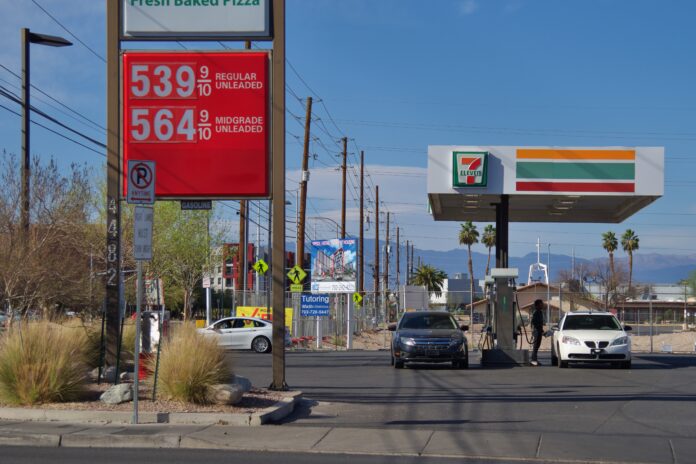
In the aftermath of the Russian invasion of Ukraine, valuable essential resources have seen an almost overnight spike in prices, and of all these elements, gas has seen the most noticeable shift.
As of March, average gas prices in California are $6 and $5.20 in Nevada, along with an average of $6.36 and $5.30 for diesel respectively.
Subsequently, consumers haven’t been too keen on the rising prices and have noticeably been reducing gas consumption in response.
As the war in the east continues to rage on, the uncertainty held by consumers about gas prices has increased at an almost proportional rate. Introduction of stronger sanctions, along with diplomatic condemnation has seen the value of crude oil increase, given the sensitive nature of Russia’s diplomatic intentions.
With gas prices continuing to skyrocket, what does this mean for tourist conglomerates like California and Nevada? Could it bring down the rate in which tourists visit the states? Perhaps economic repercussions as a result?
“I personally think that rising gas prices will limit tourism in not only California and Nevada, but the entirety of the United States as well,” said Alexander Oles, a freshman hospitality major at UNLV and California native.
“As an example of this, I was presented with an opportunity to drive from California to Las Vegas, but turned it down on the basis that it would cost me over 300 dollars in gas money. As for remedies to this problem, I would like to see cheaper and more efficient electric car options.”
Oles proceeded to further expand upon how current car manufacturers could potentially institute more fuel efficient systems in pre-existing engines that could help cars use fuel in a more efficient manner. Given the current situation, however, rising gas prices will only continue to wreak havoc on the tourism industry without a proper remedy.
According to a research study conducted by Michigan State and Clemson University found that increases in gas prices have directly led to one-third of Americans changing their vacation plans as a result of prices. Moreover, the study found that approximately “67% of car travel and 50% of air travel is discretionary.”
As a result, since ground and air travel are discretionary, consumer behavior toward travel will be heavily influenced by economic factors. Given that basis, the higher the gas prices, the lower the rates of consumer/tourist travel.
On average, the American consumer constitutes $4 as the threshold of gas spending. In a study conducted by Longwoods International, about six in 10 travelers say that rising gas prices will hinder their vacation plans over the course of the next six months.
Additionally, according to the U.S. Energy Information Administration, retail gas prices average around $4.32 With this in mind, tourism rates would see a dramatic decrease in overall demand, since consumers are already spending rambunctious amounts of money to get to their destinations in the first place.
So what can be done to remedy such an issue? To be fair, not much. An almost natural solution to rising gas prices would be simply air travel or an electric car, but neither seem to fit the average financial scope of most everyday Americans.
With post-pandemic travel rates, prices of airfares are already continuing to climb, with an expected rise of 7%. With the recent surge in gas prices, however, searches for round-trip flights have seen a decrease in overall demand, driving the likelihood of tourism rates down with it. In fact, the searches for such trips have decreased 9% in the last couple of months.
One possible attainable solution toward fixing gas price-induced tourism rates would be to increase domestic production of gas. By removing the middle-man from the equation, the U.S. can alleviate the costs associated with importing foreign oil and thereby decrease the overall price of gas levied on consumers.
In the current situation, tourism rates and gas prices seem to follow an almost proportional behavior. As gas prices increase, tourism rates decrease and vice versa. On the same basis, oil and gas are not only used for just cars, but many anemites associated with travel. By that standard, not only would the amount of tourism decrease as a result, but the quality of the trip itself would also depreciate at the same rate.
Overall, Nevada and California will most likely see a noticeable, if not immediate, drop in tourism. In a sense, tourism thrives on the basis of consumer behavior. If the inputs needed to create a good vacation are expensive, then the likelihood of consumers wanting to travel will sharply decrease as a result.
With gas prices continuing to climb higher and higher, pivotal steps must be taken to ensure that Americans can afford basic necessities like gas and maintain a prosperous tourism rate.
